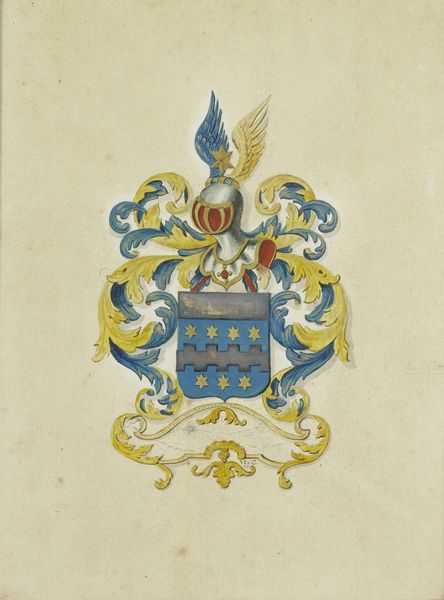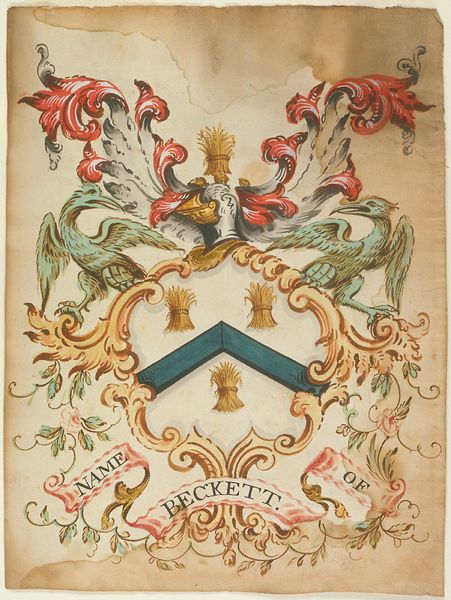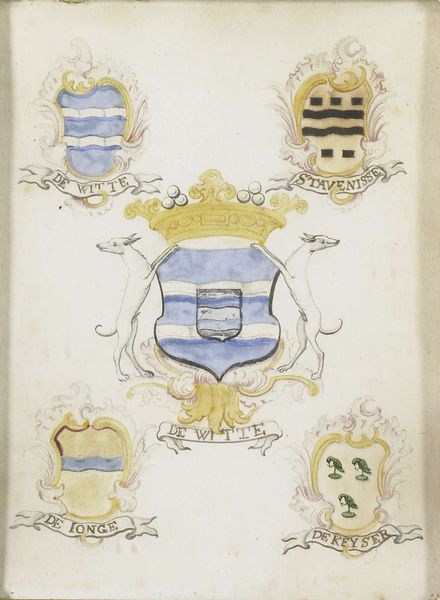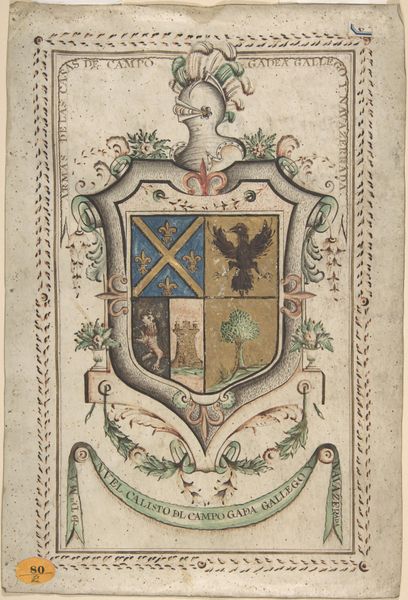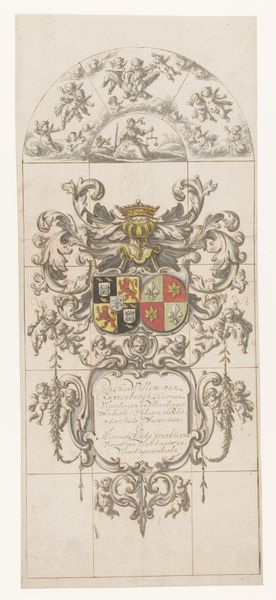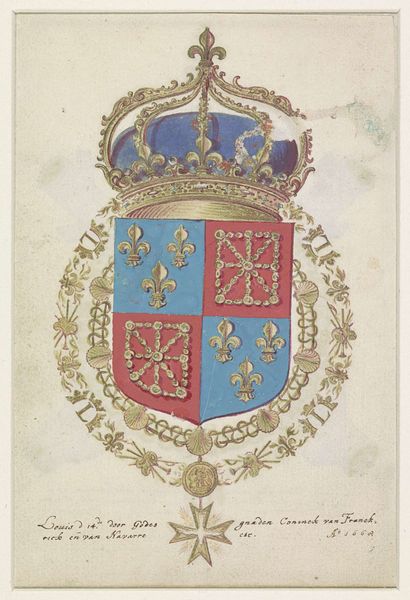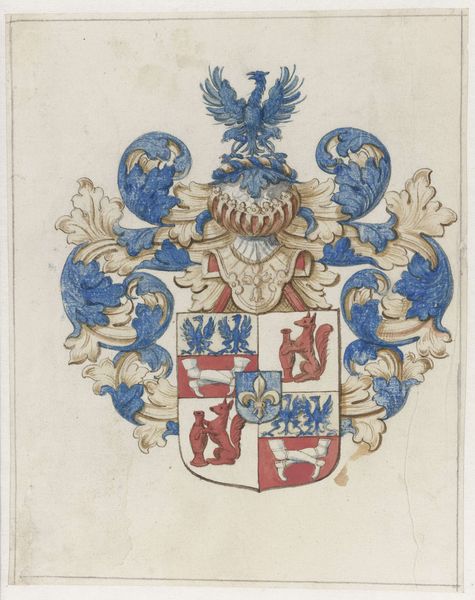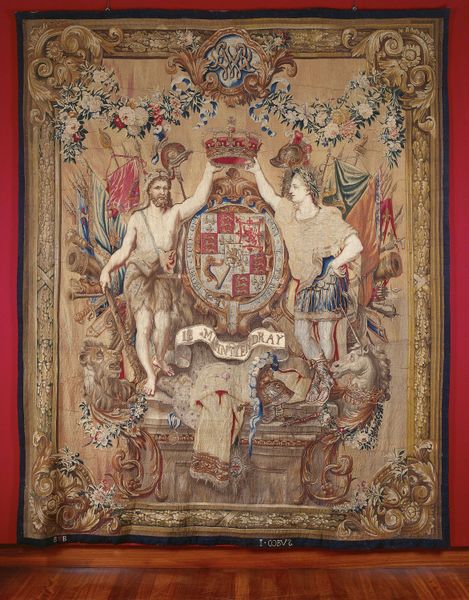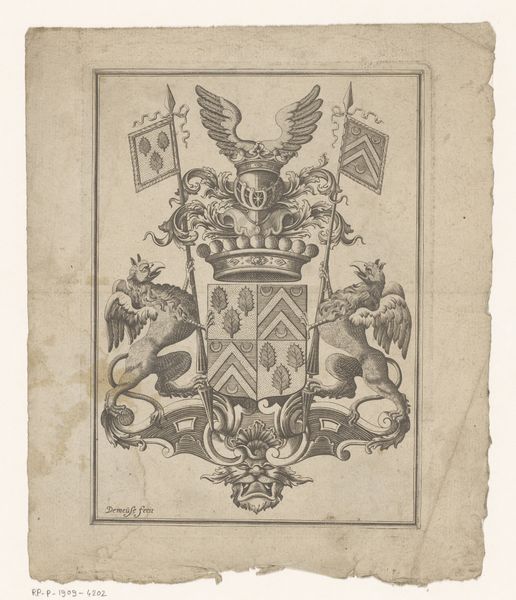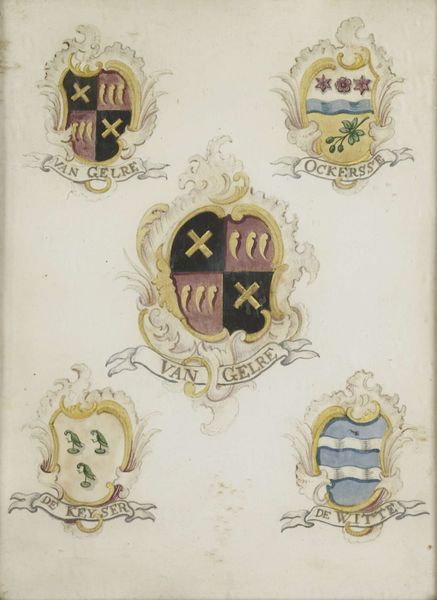
De alliantiewapens van Jan Boudaen Courten en Anna Maria Hoeufft, overgrootouders van Jacob Verheye van Citters, in een gesneden houten lijst met de wapens van de zestien kwartieren van het echtpaar 1675
0:00
0:00
tempera, painting, paper, wood
#
wood texture
#
toned paper
#
baroque
#
tempera
#
painting
#
paper
#
wood
#
decorative-art
#
decorative art
#
watercolor
Dimensions: height 30.5 cm, width 25 cm, height 42 cm, width 35.5 cm, depth 1.5 cm
Copyright: Rijks Museum: Open Domain
Editor: This ornate piece, “De alliantiewapens van Jan Boudaen Courten en Anna Maria Hoeufft...” dates back to 1675. It's attributed to Justus van Attevelt and combines tempera, watercolor, and wood. The carved wooden frame is amazing! It makes me think about legacy and identity. What do you see in this work, considering its context? Curator: The immediate visual impression speaks of power and lineage, doesn't it? The coat of arms isn't just decoration; it’s a meticulously crafted symbol of social standing. Looking deeper, consider what it means to declare one’s ancestry so explicitly in 17th-century Dutch society. What social dynamics are at play here? Who was this statement intended for? Editor: I guess it's like a family portrait, but with symbols doing the work of faces. It seems less personal somehow. Curator: Exactly. And the choice to display *sixteen* quarterings signifies extensive noble connections. But consider the historical context: The Dutch Republic was, in theory, a classless society. What tensions do you think this kind of display might create, considering the evolving social and political landscape of the time? Is it perhaps a pushback against the changing societal structure? Editor: So it’s about preserving power and reminding everyone of their status within a supposedly egalitarian society? Curator: Precisely! These aren't simply aesthetic choices. The alliance of these families and their visual representation underscore power structures and their perpetuation. Art becomes a tool to negotiate social anxieties of class within the supposed Democratic ideals in the Netherlands. How does knowing this shift your understanding of the piece? Editor: It really changes my view of it. What I saw as a historical curio now seems like a bold statement about social stratification. Curator: And a perfect example of how art, even something that appears decorative, actively participates in power dynamics. I am really fascinated to know how current theories such as intersectionality might affect our views regarding historical symbols. Editor: I will not look at old frames the same!
Comments
No comments
Be the first to comment and join the conversation on the ultimate creative platform.
